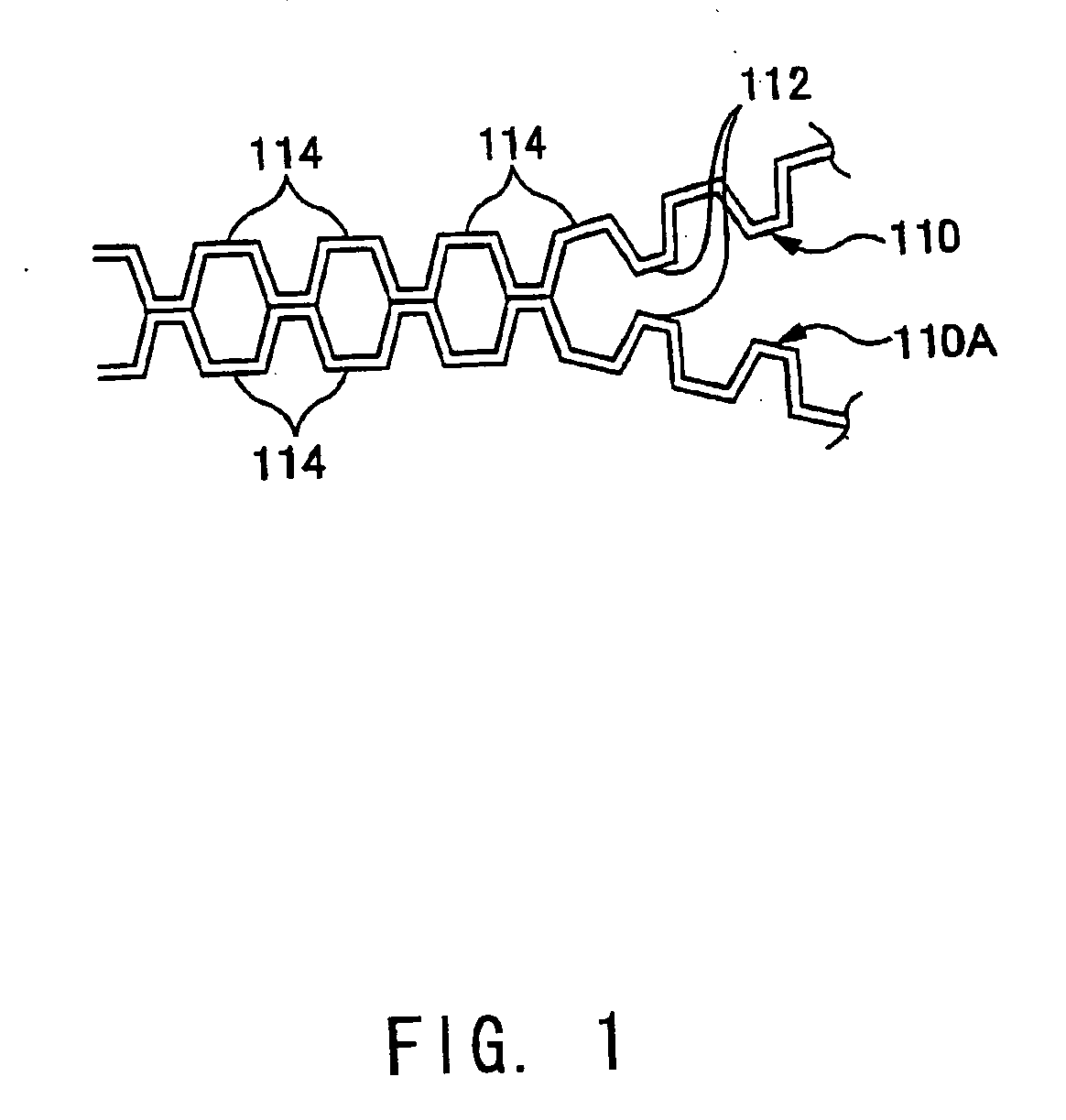Hollow structure plate, manufacturing method thereof, manufacturing device thereof, and sound absorbing structure plate
a technology of hollow structure and manufacturing method, applied in the field of hollow structure plates, can solve the problems of inability to maintain strength, inability to manufacture butter, and inability to meet the needs of use, and achieve the effect of reducing pressur
- Summary
- Abstract
- Description
- Claims
- Application Information
AI Technical Summary
Benefits of technology
Problems solved by technology
Method used
Image
Examples
example 1
[0063] A homopolypropylene sheet (melting point: 165° C., softening point: 120° C.) having a thickness of 0.5 mm and a Metsuke (weight per unit area) of 500 g / m2 in the melted state was placed on a vacuum molding plate having a length of 1000 mm and a width of 1000 mm in which hollow protrusions (emboss pins), whose height is 5.5 mm and whose diameter of the upper base is 2 mm and diameter of the lower base is 6 mm, were arranged in a staggered lattice arrangement with a pin interval of 2 mm, and vacuum molding was performed in off-line. The ends of the protrusions of the obtained two embossed sheets were thermally fused. Using this as a core member, homopolypropylene sheets having a thickness of 0.25 mm and a Metsuke of 250 g / m2 were attached as face material to the front and the back of this core member. Thus, a hollow structure plate having a total thickness of 11.5 mm and a Metsuke of 1500 g / m2 was obtained. Thereafter, a hole-opening process was performed to one of the liner po...
example 2
[0064] A hollow structure plate was obtained in the sane manner as in Example 1, and then a hole-opening process was performed to one of the liner portions of the hollow structure plate such that holes of φ2.5 mm were formed at an equal pitch at an opening ratio of 0.36%. The sound absorption coefficient of this perforated hollow structure plate was measured in a small reverberant chamber.
example 3
[0065] A hollow structure plate was obtained in the same manner as in Example 1, and then a hole-opening process was performed to one of the liner portions of the hollow structure plate such that holes of φ4.0 mm were formed at an equal pitch at an opening ratio of 0.36%. The sound absorption coefficient of this perforated hollow structure plate was measured in a small reverberant chamber.
PUM
| Property | Measurement | Unit |
|---|---|---|
| angle | aaaaa | aaaaa |
| diameter | aaaaa | aaaaa |
| diameter | aaaaa | aaaaa |
Abstract
Description
Claims
Application Information
 Login to View More
Login to View More - R&D
- Intellectual Property
- Life Sciences
- Materials
- Tech Scout
- Unparalleled Data Quality
- Higher Quality Content
- 60% Fewer Hallucinations
Browse by: Latest US Patents, China's latest patents, Technical Efficacy Thesaurus, Application Domain, Technology Topic, Popular Technical Reports.
© 2025 PatSnap. All rights reserved.Legal|Privacy policy|Modern Slavery Act Transparency Statement|Sitemap|About US| Contact US: help@patsnap.com



